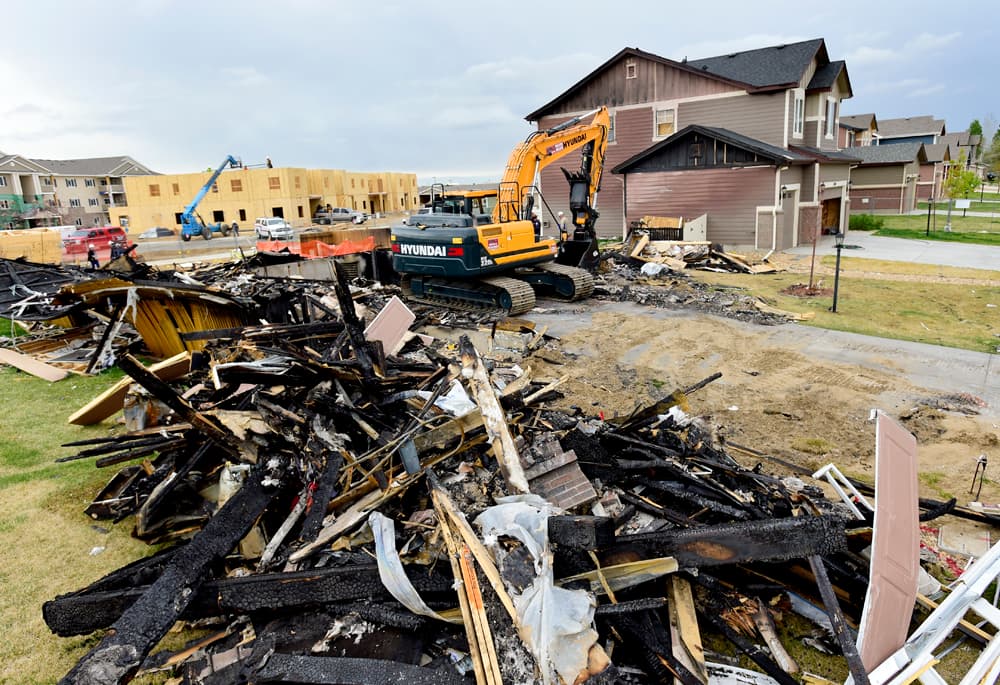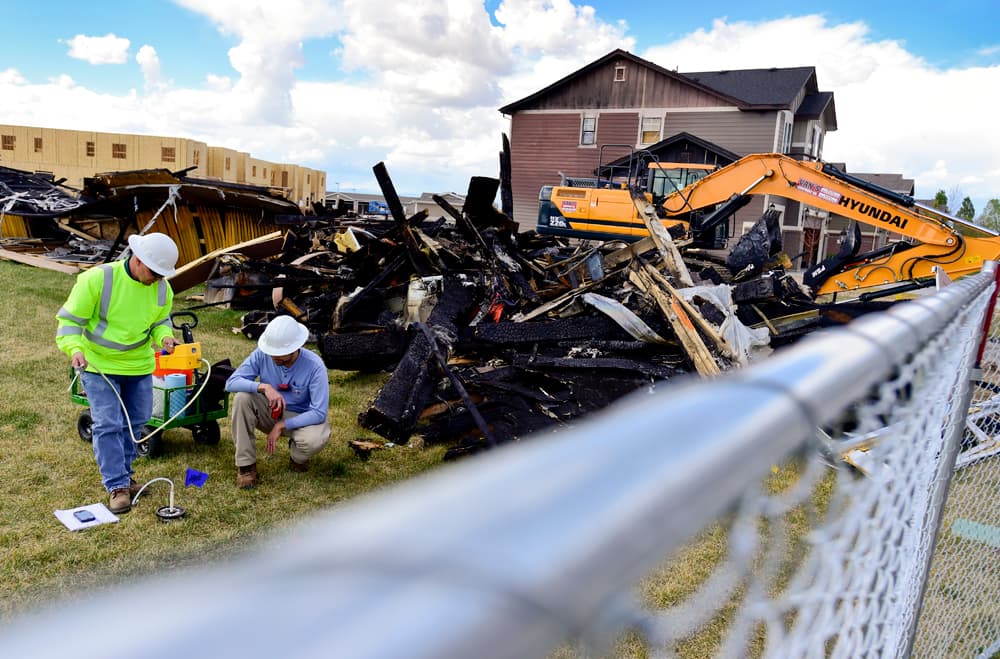
Investigators announced Tuesday that the cause of a horrifying fatal home explosion in Firestone was natural gas seeping into the soil -- and from there into a French drain and into the house -- from an uncapped abandoned pipeline to a nearby well. Gov. John Hickenlooper responded by ordering statewide inspections of all flowlines within 1,000 feet of occupied structures. Meanwhile, an investigation into responsibility for the leak continues.
The safety of oil and gas operations near homes and schools has been one of the most contentious issues in the state.
Here are six things to know as this story continues to develop:
Colorado's top oil and gas regulator said the explosion was unusual, but there's no guarantee something like this couldn't happen again.
Right now, the state doesn't test the integrity of smaller flowlines, and there is no comprehensive map of pipelines, including what are likely many abandoned pipelines around oil and gas operations.
As the Colorado Statesman reported, Matt Lepore, executive director of the Colorado Oil and Gas Conservation Commission, said a "confluence of events" led to the explosion and described them as both "highly unusual" and "horrifying." But the state's current system of inspections and regulations wouldn't necessarily catch a similar problem elsewhere, he said.
Lepore explained that the state doesn’t test the integrity of lines where pressure measures less than 15 pounds per square inch. He said there are a great deal of well lines of all sorts across the state — and across Weld County in particular where the home explosion occurred — and he seemed unsure how the state and operators might go about making sure all abandoned well lines were not leaking in dangerous ways — into foundation drains, for example, as fire inspectors just hours before had reported was the case at the home in Firestone.
“What happened was highly unusual… It was horrible and horrifying,” Lepore said. “And we will seek to minimize the possibility of this happening again — and I think [oil and gas] operators will be hyper-vigilant about this going forward.”
There's a reason investigators and regulators are stressing that the proximity to the well didn't cause this accident.
Community activists and environmentalists have long been concerned that oil and gas drilling is allowed much too close to homes and schools, while the industry has asserted that it's perfectly safe. The well in this incident was about 170 feet from the home. Gas got into the home because an abandoned pipeline seven feet below the surface was cut about six feet from the home's foundation when other equipment was moved to make way for housing development. For some reason, the pipeline was never capped likes others in the area and remained attached to the well, where a valve was found in the open position.
Both Lepore and Frederick-Firestone Fire Protection District Chief Ted Poszywak stressed that proximity to the well was not the cause of the explosion; rather it was the uncapped pipeline. While inspecting old pipelines might require new regulations and procedures, it has fewer political and economic implications than increasing setbacks.
Nonetheless, if the homes weren't so close to the oil and gas operation, they wouldn't have been so close to the cut line either. These distinctions matter in terms of creating the right policy response, but this remains, essentially, an industrial accident that happened in a residential neighborhood because these uses co-exist all around Colorado.
Oil and gas companies have 30 days to inspect their flowlines.
The governor's order requires companies to:
- Inspect and pressure test existing oil and gas flowlines within 1,000 feet of occupied buildings to ensure integrity;
- Ensure that any lines that are not in use are properly marked and capped;
- Ensure all abandoned lines are cut below the surface and sealed.
Inspections must occur within 30 days and lines tested for integrity within 60 days. Abandoned lines must be cut and sealed under current rules within 60 days.
Natural gas is odorless in its natural state.
This is one of those things I know but forget. The natural gas we use in our homes has that distinct odor added to it precisely so that we'll know when it's leaking and can do something about it before there's a catastrophe. The gas that was seeping out of the pipeline would have been odorless and undetectable to Joey Irwin and Mark Martinez, who were killed by the explosion in the basement of the Martinez home. Erin Martinez, Mark's wife and Joey's sister, sustained severe burns, and a child, believed to be their 11-year-old son, was also injured.
Firestone, not the state, is responsible for these homes being so close to the oil and gas operation.
State regulations require a 500-foot setback when new wells go in near existing homes, but local governments regulate how close new homes can go to existing wells. Firestone requires a 150-foot buffer, which this housing development complied with. The well here was drilled in 1993, and the homes were built in 2015. The wells were not in use in 2016 and were turned on again in January.
There are a lot of economic interests in play in these decisions. While oil and gas is the most prominent and well-heeled, homebuilders and local communities also have an interest in keeping land developable as the region attracts hundreds of thousands of new residents.

This is going to reverberate in state politics around oil and gas for a long time.
Last year, an initiative that would have increased the distance between oil and gas operations and structures failed to make the ballot.
This year, Attorney General Cynthia Coffman sued Boulder County to end its moratorium on oil and gas drilling, and the Colorado Court of Appeals ruled that the state must protect public health and environment before issuing permits for new wells. The state Oil and Gas Commission is considering appealing that ruling.
A Republican-controlled Senate committee killed a bill that would have increased the distance that oil and gas operations have to maintain from schools. Right now, the state requires a 1,000-foot buffer between wells and the main school building. The bill would have made the buffer between the well and the school property line. At the same time, a Democratic-controlled House committee killed a bill that would have made tampering with oil and gas operations a felony rather than a misdemeanor.
All of that was before the cause of this explosion was known.
David Sirota and Josh Keefe tracked campaign contributions from oil and gas interests in the International Business Times. The Colorado Independent has a deep dive on the influence of the oil and gas industry at the Capitol and the way this issue has become highly partisan. Writing before the cause of the explosion was determined, the Times-Call reported that the incident would surely fuel an already charged policy debate around regulations, and writing afterward, the Denver Business Journal reached a similar conclusion.
Conservation Colorado, the state's largest environmental advocacy group, said the burden needs to be on industry to prove that it's safe.
"The Firestone tragedy is the most recent -- and heart-breaking -- wake-up call that oil and gas exploration is a dangerous, heavy industrial activity that must be kept away from homes and schools," Executive Director Peter Maysmith said in a statement. "For years, communities across the state have raised concerns about the perils of siting homes and oil and gas facilities near each other, but these cries for change have fallen upon deaf ears. We have been left with empty promises from the oil and gas industry and tragedies such as this. Our elected officials must act with great urgency to strengthen the rules and laws governing oil and gas drilling."
Industry groups, meanwhile, reiterated a commitment to safety and to seeing through the results of the investigation.
The Colorado Oil & Gas Association, a trade group, said in a statement to the Business Journal that “the safety of our families, friends, and communities is our highest priority and will remain so as we work to prevent tragedies like this from happening again.”
The statement said COGA supports the state’s call to inspect flow lines and is “committed to partnering with the COGCC, our operators, home builders, and Colorado communities to get it right."
This story has been updated to include one more reading assignment.











